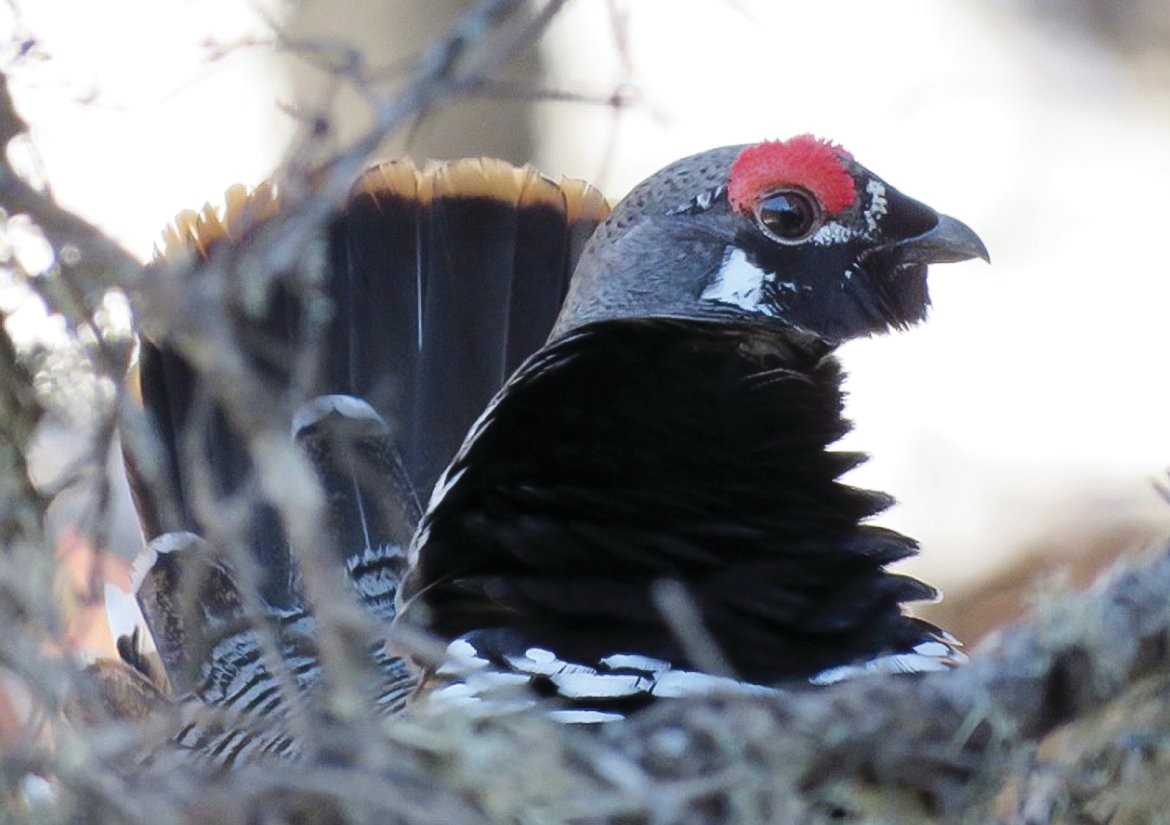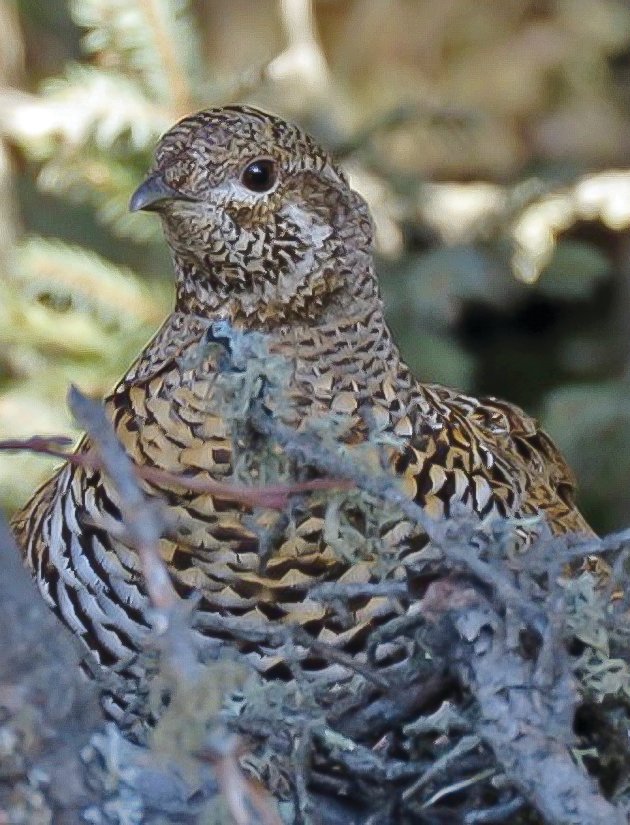Support the Timberjay by making a donation.
Love is in the air
For these conifer-loving grouse, the mating season is underway early
According to the calendar, spring arrives Saturday, but out in our area bogs, the spruce grouse have been thinking spring for a while now. It’s actually a bit earlier than usual, since the …
This item is available in full to subscribers.
Attention subscribers
To continue reading, you will need to either log in to your subscriber account, or purchase a new subscription.
If you are a current print subscriber, you can set up a free website account and connect your subscription to it by clicking here.
If you are a digital subscriber with an active, online-only subscription then you already have an account here. Just reset your password if you've not yet logged in to your account on this new site.
Otherwise, click here to view your options for subscribing.
Please log in to continue |
Love is in the air
For these conifer-loving grouse, the mating season is underway early
According to the calendar, spring arrives Saturday, but out in our area bogs, the spruce grouse have been thinking spring for a while now. It’s actually a bit earlier than usual, since the spruce grouse breeding season usually kicks into high gear come April. But given our early warm-up, the search for love in the swamp is heating up ahead of schedule.
Actually, spruce grouse aren’t only found in swamps here in the North Country. But this is a bird of the coniferous forest and so the extensive black spruce forests commonly found in our vast peatlands make good habitat for this northern species. But they can also be found in any predominately coniferous woods, and are particularly fond of jack pine as well as spruce, which means they can be found in upland areas as well as swamps. In northern Minnesota, they range from as far west as Red Lake, east to the tip of the Arrowhead, although their populations tend to be localized and they are nowhere near as common as our ubiquitous ruffed grouse. If you haven’t seen one before, you’re probably not alone. Unlike their more common cousins, spruce grouse rarely flush when humans walk by, so we’re far more likely to simply walk right past them. Their reluctance to flush for a human has given them the common name, “fool’s hen,” but given that this species lives where humans are rarely seen, there’s little reason for these birds to react to our presence. Even grouse hunters will try to avoid them most of the time, since their meat is darker and gamier than their delectable cousins, the ruffed grouse. Even so, the DNR estimates the annual spruce grouse harvest in the state at 10,000-20,000, which doesn’t seem to have an impact on the population.
Like all grouse, the breeding season comes with a bit of fanfare. Grouse of all kinds are famous for their breeding displays, which combine visual display with a variety of sounds. We’ll soon be hearing the drums of ruffed grouse echoing through the woods all across the region. In more open parts of the region, the sharptails will be appearing to dance, strut, and inflate their air sacs on their own breeding leks, where groups of males will compete for the attentions of interested females.
Back in the thick conifers, the spruce grouse will be putting on their own displays. The impressive males, with their brilliant red combs and their striking black and white feather patterns spend most of their time strutting in a somewhat open, often mossy location. At times, they stop, stand erect, and audibly snap their yellow-tipped tail feathers out in a fan. Their most noteworthy display is what’s called a flutter flight, which often starts with a few wing flaps on the ground (like the start of a ruffed grouse’s drum) before the male ascends noisily to an exposed perch 10-15 feet in the air. From there, he’ll pose and puff himself up for a minute or two, before descending in a flutter back to the ground, hopefully having attracted the attention of a receptive female. Guys of every species seem to think alike, don’t they?
As showy as the male is, the female is just the opposite, with her brown and black mottling designed to blend perfectly with the dappled light that filters through the conifers to the forest floor, where the hen will soon be nesting. She’ll lay about a half dozen eggs and the young birds are ready to follow their mother through the woods almost right away. Along the way, they feed mostly on insects, which are a lot more nutritious than the spruce and pine needles they’ll subsist on half the year as adults. The young birds stick with mom through most of the summer and then the broods start to scatter through the fall and winter.
We don’t really know how well spruce grouse are doing in Minnesota. Anecdotally, they seem to be scarcer than I remember thirty years ago, but maybe I’m not spending as much time in the spruce swamps as I used to. Overall, the population seems to be fairly stable, although an ongoing study by a DNR biologist should start giving us a better idea in the near future.









